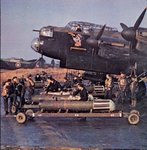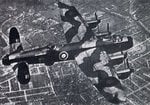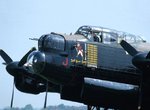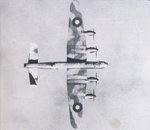the lancaster kicks ass
Major General
- 19,931
- Dec 20, 2003
i can argue because the lancaster was a purpose build night bomber that was the culmination of all the RAF's experience in night bombing, which we were doing whilst america was still screaming isolation, we had the tactics, weapons, support, experience, knowledge and electronics for night bombing, the B-29 was the culmination of the USAAF's day bombing, and i agree she was the finest bomber of the war, however in the night time role role she was little changed from her day time tole and faced an enemy that made navigation the B-29's biggest problem, what does that say about them? let's not kid ourselves by night the japs weren't a threat, and just how many Kamikazes were out at night?
if navigation is the biggest problem surely this navigation system wasn't up to the job? the night war over europe required lanc crews to be alert from the time they take off, knowing the enemy is 100 miles away and they could get intercepted at any point by experienced night fighters, to help this the lancs carry a range of electronics equiptment not only for navigation but for bombing, countering night fighters and countering ground radars, if they were intercepted they had systems developed for defence, tactics worked out and they often worked, some times they didn't, not only did the B-29s have nothing to counter RADARs leaving them open to interception but i doubt they had the experience to counter night fighters, as the RAF showed you cannot depend on defensive guns and you most cirtainly can't use big formations.........
if navigation is the biggest problem surely this navigation system wasn't up to the job? the night war over europe required lanc crews to be alert from the time they take off, knowing the enemy is 100 miles away and they could get intercepted at any point by experienced night fighters, to help this the lancs carry a range of electronics equiptment not only for navigation but for bombing, countering night fighters and countering ground radars, if they were intercepted they had systems developed for defence, tactics worked out and they often worked, some times they didn't, not only did the B-29s have nothing to counter RADARs leaving them open to interception but i doubt they had the experience to counter night fighters, as the RAF showed you cannot depend on defensive guns and you most cirtainly can't use big formations.........







